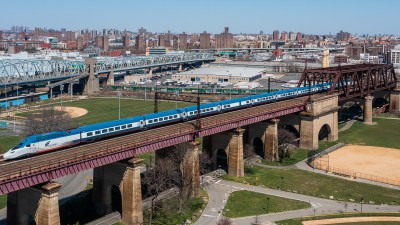[Zoltan] was developing a workshop on Matter for DEF CON, and wanted to whip up a fun IoT project to go with it. His idea was simple—take a simple toy train, and put it on the Internet of Things.
Speed and low cost were the goals here, with a budget of around $40 and a timeline of one week. The train set sourced for the build was a 43 piece set with a locomotive, one carriage, and a simple oval track, retailing for $25. The toy train got a new brain in the form of an ESP32-C3 DevKitM-1, with the goal of commanding the device over Wi-Fi for ease of use. The microcontroller was set up to control the train’s brushed DC motor with an IRL540 MOSFET. A USB battery bank was initially employed to power the rig, which sat neatly on the train’s solitary carriage. This was later swapped out for a CR123A battery, which did the job for the train’s short duration in service.
Code for the project was simple enough. The ESP32 simply listens for commands via Matter protocol, and turns the train on and off as instructed. [Zoltan] demos the simple interoperability of the Matter protocol by switching the train on and off with Google Home voice commands, and it works perfectly well.
Toy trains aren’t something we typically see included in smart homes, but maybe they should be. If you’re cooking up your own oddball IoT hacks, be sure to let us know on the tipsline!

















